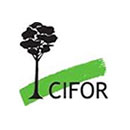Almost all governments and lending institutions require environmental impact assessments for road projects. Typically, these studies fill up several volumes and cost hundreds of thousands of dollars. But most reports I have read are not particularly helpful. Often you know almost as little about the projects’ environmental impact after reading them as when you started.
’Spatial Econometric Analysis and Project Evaluation: Modeling Land Use Change in the Darien’ by Gerald Nelson, Virginia Harris, and Steve Stone stands out as an exception. The authors use state-of-the-art econometrics and remote sensing data to predict how resurfacing the segment of the Pan-American Highway leading to Yaviza and constructing a ferry to La Palma might affect land use and logging. Both measures are controversial, since they might affect the Darien National Park and the indigenous reserves in the area. In the long run, paving the road to Yaviza could also prove to be a first step towards closing the one remaining gap in the highway between Panama and Colombia, which separates North America from South America. Given the topic’s inherently controversial nature, the Inter-American Development Bank (IADB) wanted to have the best possible environmental impact assessment before it approved a $70 million dollar loan to finance these and other activities.
The study assumes that transportation costs largely determine where it is profitable for farmers to plant pasture and crops and where logging companies harvest timber. By studying the relation between transport costs, land use, and logging between 1987 and 1997, the authors are able to simulate how farmers and logging companies will react if the government paves the road and constructs the ferry. The study looks at nine land use categories and takes into account the type of road, slope, elevation, and rainfall, as well as whether or not an area forms part of a national park, indigenous reserve, or forest concession.
The authors conclude that if the government goes ahead with its proposed plans the area in pasture will increase by 50,000 hectares. Most of the new pasture will replace scrub vegetation, not mature forest. The project may seriously affect cativo forests, but otherwise it should not cause much deforestation. The authors do not expect loggers to harvest more high value timber since practically all of the Darien is already accessible to loggers interested in high value species.
We want you to share Forests News content, which is licensed under Creative Commons Attribution-NonCommercial-ShareAlike 4.0 International (CC BY-NC-SA 4.0). This means you are free to redistribute our material for non-commercial purposes. All we ask is that you give Forests News appropriate credit and link to the original Forests News content, indicate if changes were made, and distribute your contributions under the same Creative Commons license. You must notify Forests News if you repost, reprint or reuse our materials by contacting forestsnews@cifor-icraf.org.
Further reading
You can obtain an electronic version of the paper from the internet at the following web page: http://www.iadb.org/sds/utility.cfm/488/ENGLISH/pub/1355
To send comments about this message or exchange views with the authors, you can write Gerald Nelson at: mailto:g-nelson@uiuc.edu
To obtain a free hardcopy, please write Diego Rodriguez at: mailto:diegor@iadb.org (Do not forget to include your postal address in the message.)




